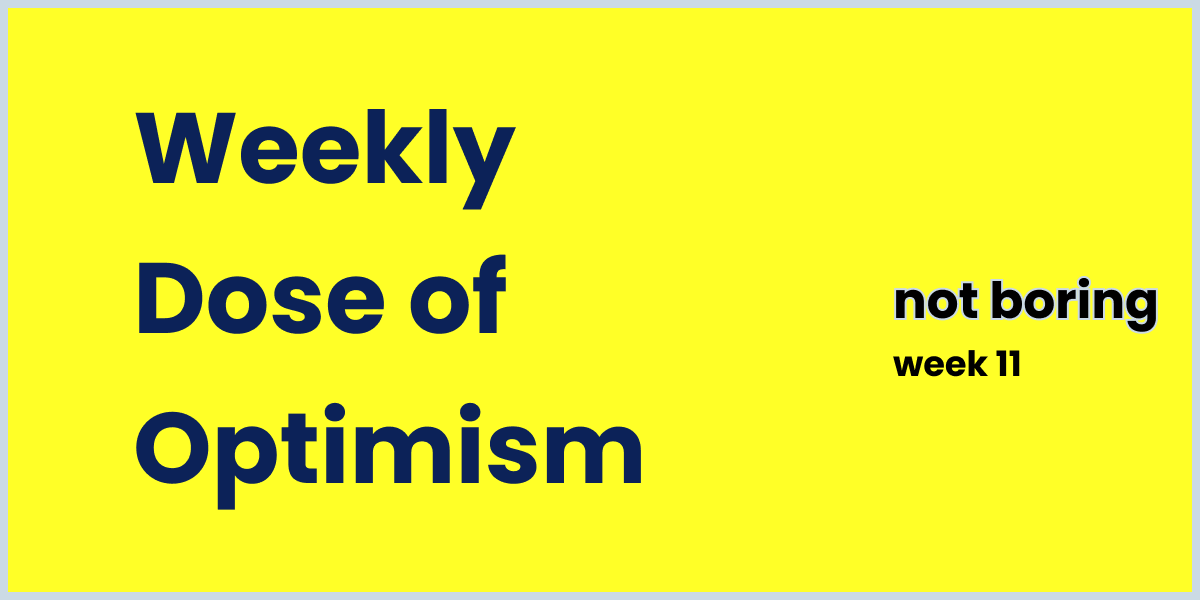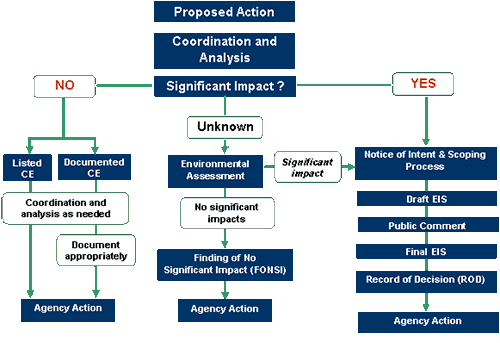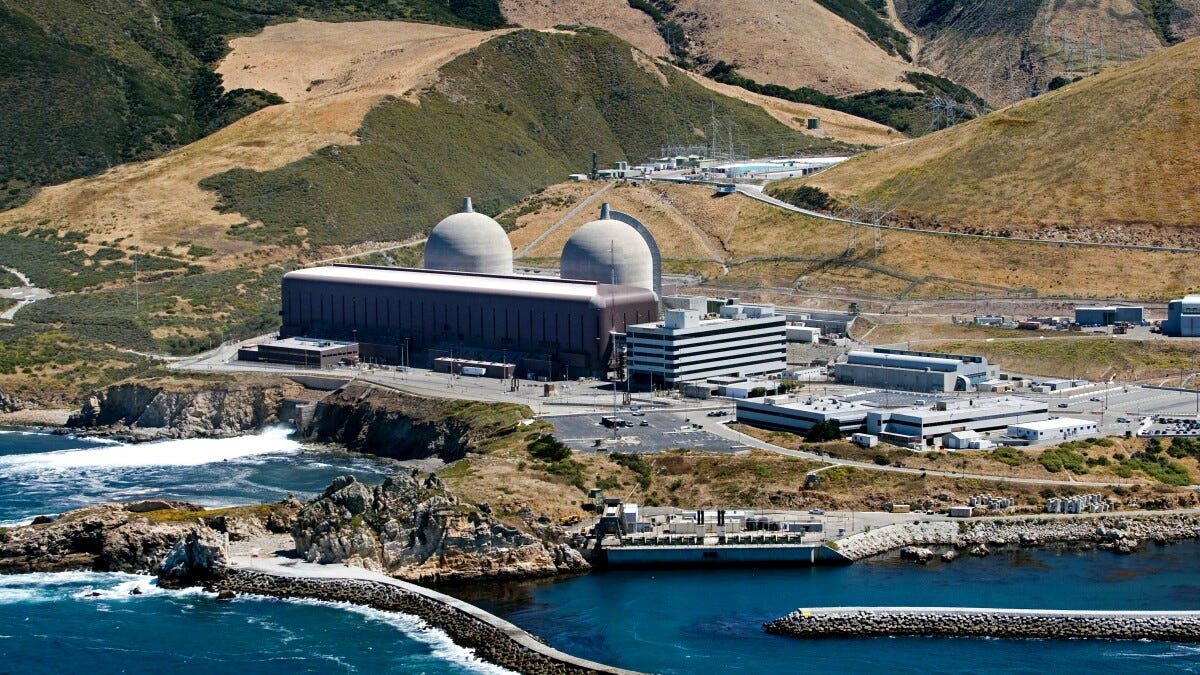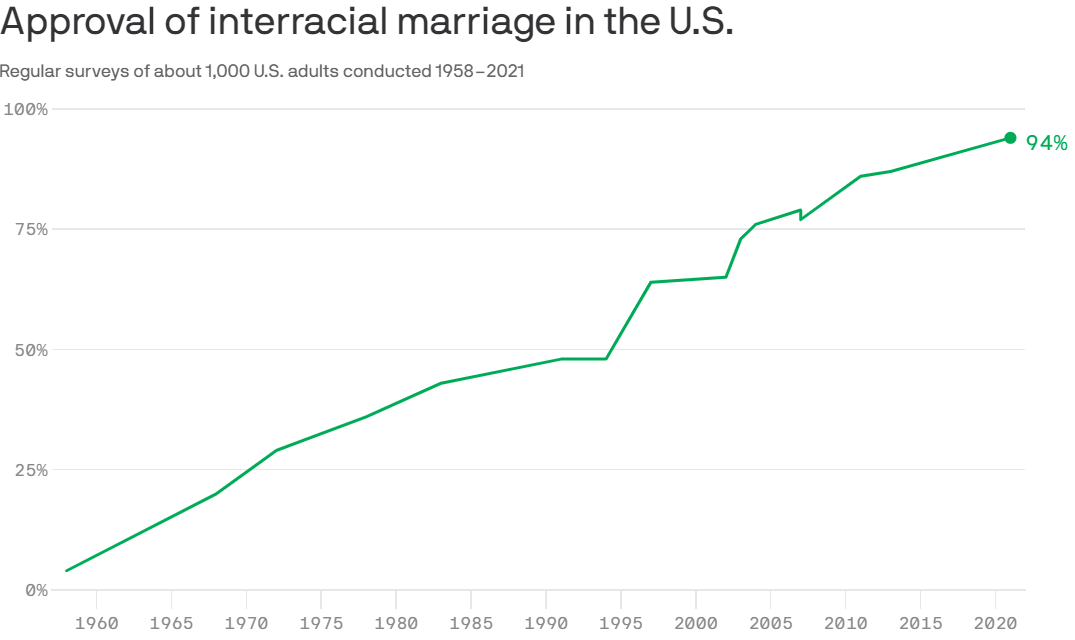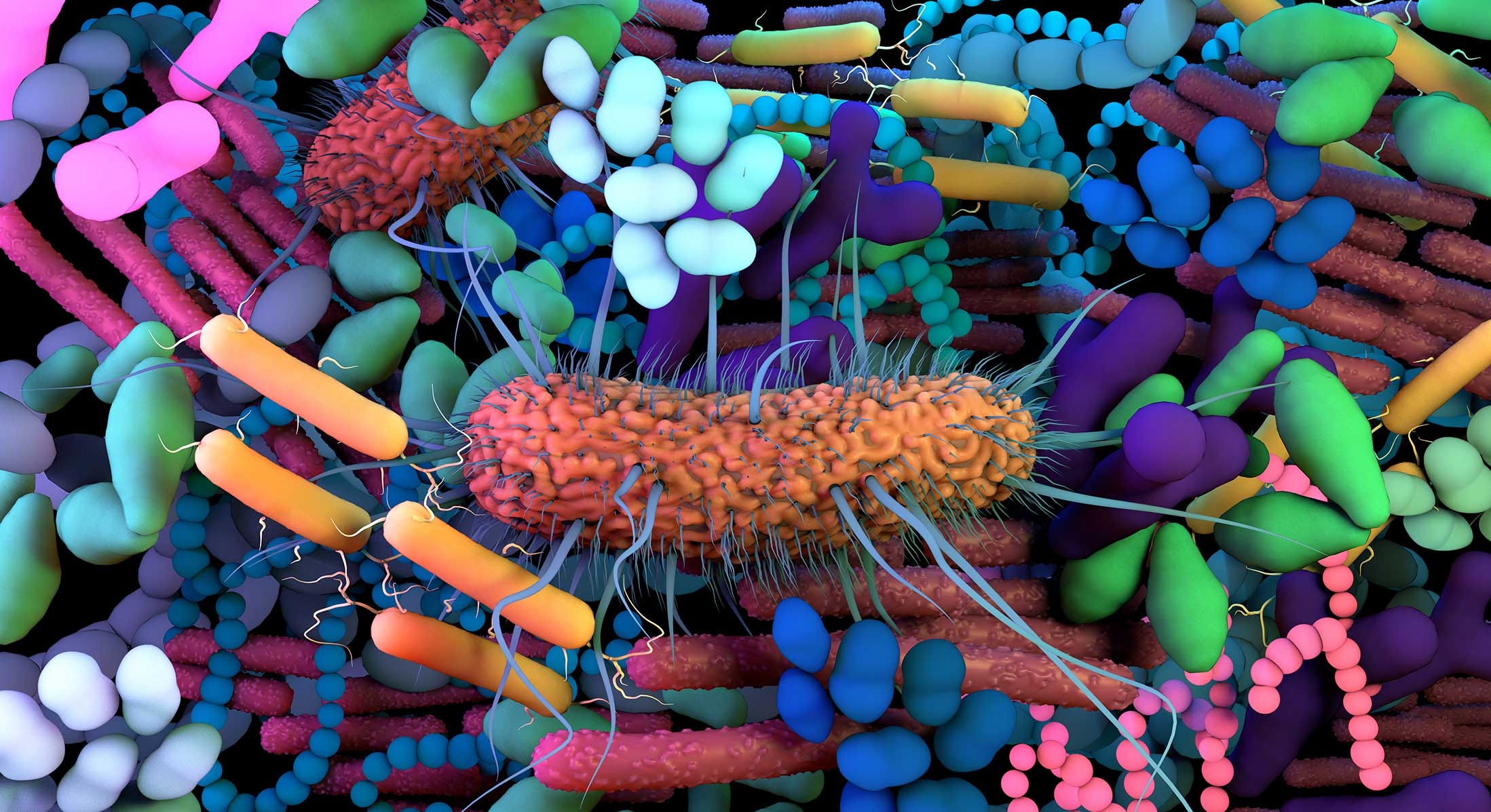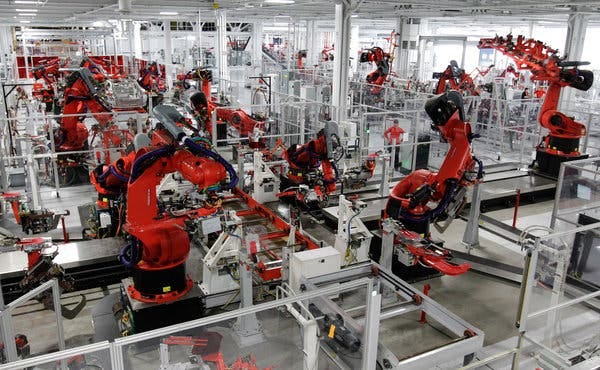Not Boring by Packy McCormick - Weekly Dose of Optimism #11
Weekly Dose of Optimism #11Abolish NEPA, Diablo Days, Interracial Marriages, GUTS, and Abundant RobotsCome for the Optimism, stay for the in-depth analyses of tech companies and trends: Hi friends 👋, Happy Friday and welcome to our 11th Weekly Dose of Optimism. We’re doing great. It’s been fascinating to view everything going on in the world through the Optimistic Lens over the past month or so. While war, spiking energy prices, and energy shortages are not things to get excited about, the world is responding by seemingly putting more support behind sensible energy policies and decisions. Those decisions might leave humanity much better off in the long run. Crisis focuses, and leaves little room for bullshit. It’s a good example of the idea I wrote about in Optimism: “Optimism isn’t a belief that everything will go well all the time. It’s a belief that despite the inevitable challenges, we will make progress.” Let’s get to it. The Weekly Dose is brought to you by my daily dose… Athletic Greens With the busyness of summer travel behind me, I am focusing on my wellbeing. For me, that means: running, meditating, and Athletic Greens. I’m starting to get into my routine, and while only time will tell how long it lasts, it’s feeling pretty great so far. Check out Athletic Greens using the special Not Boring link below and get a free 1yr supply of Vitamin D + 5 free travel packs. (1) The Case for Abolishing the National Environmental Policy Act Jeremiah Johnson for LiberalCurrents
If you’re like me, and bureaucracy and unnecessary years-long reviews give you the heebie-jeebies, then you’ll likely appreciate Jeremiah Johnson’s case for abolishing the National Environmental Policy Act (NEPA.) NEPA, passed in 1969, was likely well-intentioned: it requires extensive environmental reviews on federal actions which might “significantly affect” the environment. In practice, however, NEPA increases direct costs, delays projects, disincentives new projects and has few meaningful successes stories it can point to. In fact, as Johnson points out, NEPA has delayed or killed many explicitly environmental projects such as NYC’s congestion pricing plan, adding bike lands in San Francisco, and multiple solar wind projects off the coast of Massachusetts. And then there’s this gem:
Doing away with the NEPA would be an important step towards fulfilling the Abundance Agenda, and towards re-igniting America’s ability to build big, crucial things fast. It would also be a blow to the faux-environmentalism movement that cares more about signaling than facts or results, and a move towards a new, more pragmatic, and ultimately more effective regime that enables both growth and new, cleaner energy sources. (2) California extends the life of Diablo Canyon NPP From Nuclear Engineering International
Speaking of which… In a somewhat surprising sign of common sense California legislation, last week state lawmakers voted to extend the operating life of the nuclear power plant at Diablo Canyon by an additional five years. The Diablo Canyon NPP is the state’s only such plant and its largest source of electricity, producing 9% of its total electricity and 15% of its clean energy. As California struggles with its energy future, it’s encouraging to see legislation like this extension pass. On the other end of the spectrum, Hawaii closed its last coal-fired power plant. The AES Hawaii Power Plant, which produced 11% of the state’s electricity and was a major emitter of greenhouse gases, closed on Thursday. Energy is already very expensive in Hawaii — about 3x the average cost of the rest of the country — and this plant closure does not help: the typical person will see a 4% increase on their October energy bill directly due to this closure. But it’s another, albeit painful, step in the state’s complete coal ban plan. Hawaii is the most petroleum-dependent state in the US with over four-fifths of its power coming from petroleum, but it was also the first to set a goal to have 100% of its power come from renewable sources (by 2045). Here’s hoping they build some clean baseload power capacity to replace AES soon. (3) The rise of interracial marriage — and its approval rating Erica Pandey for Axios
Fifty-five years ago, interracial marriage was illegal in many states in the United States, until the Supreme Court decreed all anti-miscegenation laws illegal in 1967’s Loving v. Virginia. The first time Gallup polled Americans on the subject, in 1958, only 4% of Americans approved of interracial marriages. We only broke the 50% mark during my lifetime, in 1995. The most recent Gallup poll found that interracial marriage has a 94% approval rating among Americans, and that number is as high as 98% among 18-to-29-year-olds. Further, according to Pew Research, the percentage of interracial marriages has jumped from 3% in 1967 to 20% in 2022. The data is heartening — it’s hard to find anything that 94 out of 100 Americans approve of — and it’s a nice reminder that despite the narratives in the news, America is a very tolerant country. And we’re still making progress. (4) Stanford researchers construct most complex, complete synthetic microbiome Rebecca McClellan for Stanford News
The microbiome has become a particularly popular area of scientific (and commercial — see: Athletic Greens ad at the top of this email) research & development over the past two decades. The microbiome isn’t any one “thing” and it’s different in every human — it’s the collection of hundreds of bacterial species that live in our digestive system. So while its importance has been known for at least the last decade, pinpointing exactly how it works and running control experiments on each of the bacteria has proven difficult. These Stanford Research built a microbiome from scratch — it consists of 119 different bacterial species, each of which can be added, removed, and manipulated — which will give researches a much clearer understanding of how each individual species impacts the larger microbiome and our health as a whole. The New York Times has an excellent piece here on the research team’s process and the potential impact of its work. (5) The Supply Chain Broke. Robots Are Supposed to Help Fix It. Peter Goodman for The New York Times
Spurred by the Covid-induced supply chain disruption and current labor shortages across almost every industry, companies are once again fully embracing automation and robotics. This is nothing new — even before the Great Supply Chain Disruption, companies knew that robots were cheaper, more productive, and and came with less baggage than human workers. During previous waves of automation (or ahead of potential waves of automation), the fear has been that robots would replace humans and leave millions of workers out of a job, or at the very least, worse off. That fear seems to be less pervasive today because, in the face of labor shortages, clogged supply chains, and on-shoring trends, we simply need more resources and productivity. Noah Smith (note: we try to avoid continuously promoting the same writers, but Noah has been on a months’ long hot streak which makes it almost impossible not to share his work) makes the case in “American workers need lots and lots of robots” that not only does American need more robots, but that robots are actually good for the U.S. worker. Smith addresses the notion that robots will displace the American worker noting that basically everyone who wants a job, has a job — and that low-skill wages (the jobs most likely to be automated away) have actually steadily increased with automation. He also tends to agree with our argument above — if the U.S. is to reshore its industrial base from China, it needs to lean into its strength. Our strength, relatively speaking, is not cheap and abundant labor, but rather capital and advanced technology. If we’re going to compete with Chinese manufacturing, we need to lean into those strengths, which is to say: we need more advanced robots. Watch out for a Not Boring deep dive on one of the companies fueling the Robot Revolution in the next couple of months 👀… Please provide us with brief feedback on this week’s Weekly Dose of Optimism: Did you enjoy reading this Weekly Dose of Optimism? Yes, Meh, No Humans are pulling off some pretty incredible things every week. Whenever you find examples, share them here and we’ll feature some in the newsletter. First post I’ve written in a while coming on Monday. Until then, enjoy the weekend! Packy If you liked this post from Not Boring by Packy McCormick, why not share it? |
Older messages
Weekly Dose of Optimism #10
Friday, September 2, 2022
Artemis I pt. II, EVs & Batteries, Seabed Mining, Intelligent Tools, Passion & Pain, and Dude Where's My Flying Car?
Weekly Dose of Optimism #9
Friday, August 26, 2022
Fermi's Responsibility, Chinese Research, Forever Chemicals, Heated Hydrogen, and the Golden Age of AI
Techbio Taxonomy
Monday, August 22, 2022
A guest post by Elliot Hershberg on the four forces reshaping biotech startups
Weekly Dose of Optimism #8
Friday, August 19, 2022
Universal Vaccines, Cancer in the Cold, High-Skilled Immigration, The Immigration Flywheel, and the Europeans Come Back to Nuclear
The Space Economy
Monday, August 15, 2022
Payload Space joins us to drop an in-depth S-1 for space
You Might Also Like
Amazon Reveals It Had 20.93 Billion Searches in December - CrewReview
Friday, February 28, 2025
You're an Amazon whiz... but maybe not an email whiz. Omnisend makes setting up email for your brand as easy as click, drag, and drop. Make email marketing easy. Hey Reader, Believe it or not,
How AI Search Handles Citations, Google’s Latest Lawsuit + 2 Weird Niche Sites
Friday, February 28, 2025
It's Friday and that means one thing... ͏ ͏ ͏ ͏ ͏ ͏ ͏ ͏ ͏ ͏ ͏ ͏ ͏ ͏ ͏ ͏ ͏ ͏ ͏ ͏ ͏ ͏ ͏ ͏ ͏ ͏ ͏ ͏ ͏ ͏ ͏ ͏ ͏ ͏ ͏ ͏ ͏ ͏ ͏ ͏ ͏ ͏ ͏ ͏ ͏ ͏ ͏ ͏ ͏ ͏ ͏ ͏ ͏ ͏ ͏ ͏ ͏ ͏ ͏ ͏ ͏ ͏ ͏ ͏ ͏ ͏ ͏ ͏ ͏ ͏ ͏ ͏ ͏ ͏ ͏ ͏ ͏ ͏ ͏
Social care strategy, ads scaling tips, background carousels, and more
Friday, February 28, 2025
Today's Guide to the Marketing Jungle from Social Media Examiner... presented by social-media-marketing-world-logo The weekend is almost here, Reader! Before you unplug, here's one last round
Bitcoin industry insiders aren’t worried about the price correction
Friday, February 28, 2025
Today's letter features a guest post from Phil Rosen, the co-founder of Opening Bell Daily, an independent financial media company. ͏ ͏ ͏ ͏ ͏ ͏ ͏ ͏ ͏ ͏ ͏ ͏ ͏ ͏ ͏ ͏ ͏ ͏ ͏ ͏ ͏ ͏ ͏ ͏ ͏ ͏ ͏ ͏ ͏ ͏ ͏ ͏ ͏
OpenAI’s underestimated us!
Friday, February 28, 2025
Altman admits they ran out of GPUs—what now?
Influence Weekly #378 - YouTube Star MrBeast Is Raising Money at a $5 Billion Valuation
Friday, February 28, 2025
GTA Developer Explores Partnerships With Metaverse Creators To Transform Popular Game Into UGC Creative Hub
Weekly Dose of Optimism #133
Friday, February 28, 2025
Pancreatic Cancer Vaccine, Restoring Hearing, Loyal, Atlas, Apple, Coinbase, Lunar Landers ͏ ͏ ͏ ͏ ͏ ͏ ͏ ͏ ͏ ͏ ͏ ͏ ͏ ͏ ͏ ͏ ͏ ͏ ͏ ͏ ͏ ͏ ͏ ͏ ͏ ͏ ͏ ͏ ͏ ͏ ͏ ͏ ͏ ͏ ͏ ͏ ͏ ͏ ͏ ͏ ͏ ͏ ͏ ͏ ͏ ͏ ͏ ͏ ͏ ͏ ͏ ͏ ͏ ͏ ͏
VC valuations feel the pressure
Friday, February 28, 2025
AI prompts record VC funding; Kindred Ventures' Steve Jang on AI wearables; Stripe hits $91.5B valuation Read online | Don't want to receive these emails? Manage your subscription. Log in The
Standing on the other side of goodbye
Friday, February 28, 2025
Little moments that make me question: have I moved away or come home? ͏ ͏ ͏ ͏ ͏ ͏ ͏ ͏ ͏ ͏ ͏ ͏ ͏ ͏ ͏ ͏ ͏ ͏ ͏ ͏ ͏ ͏ ͏ ͏ ͏ ͏ ͏ ͏ ͏ ͏ ͏ ͏ ͏ ͏ ͏ ͏ ͏ ͏ ͏ ͏ ͏ ͏ ͏ ͏ ͏ ͏ ͏ ͏ ͏ ͏ ͏ ͏ ͏ ͏ ͏ ͏ ͏ ͏ ͏ ͏ ͏ ͏ ͏ ͏ ͏ ͏
A New EBITDA Adjustment to Drive Business Selling Price (a short video)
Friday, February 28, 2025
THE EXIT STRATEGIST A New EBITDA Adjustment to Drive Business Selling Price (a short video) Click Here to Watch Our Short Video The Key to driving strategic value in the sale of a technology company is
